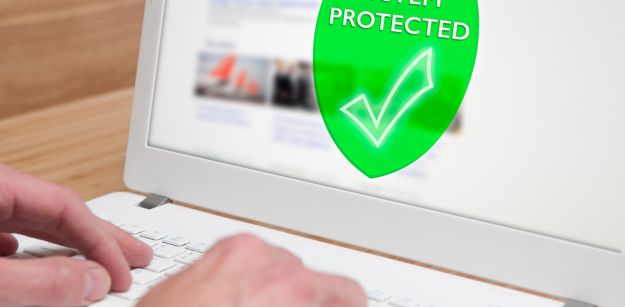In today's interconnected world, where technology plays a central role in our daily lives, the threat of malware is ever-present. Malicious software, or malware, can wreak havoc on your computer, compromise your personal information, and even lead to financial loss. Recognizing the signs of a malware infection is crucial for swift action to mitigate the damage. In this article, we'll explore 10 signs that indicate your device may be infected and provide comprehensive guidance on how to remove malware effectively.
1. Slow Performance:
One of the most common signs of malware is a noticeable decrease in your computer's speed. If you’re once-speedy device suddenly starts lagging or freezing, it may be a red flag. Malware often consumes system resources, leading to sluggish performance. To address this issue, start by running a reputable antivirus or anti-malware scan to identify and eliminate the culprit.
Read Avast popup blocker
2. Unusual Pop-ups and Advertisements:
If your computer is bombarded with unexpected pop-ups and intrusive advertisements, it could be a sign of adware or other malicious software. Avoid clicking on these pop-ups, as they may lead to further infections. Install and run a robust adware removal tool to clear your system of unwanted advertising.
3. Unexpected Browser Changes:
Malware often targets web browsers to redirect users to malicious websites or compromise their online activities. If you notice sudden changes in your browser's homepage, search engine, or default settings, it's likely due to malware. Use your browser settings to revert to the original configurations and run a malware scan to eliminate any underlying threats.
4. Unexplained Data Usage:
Malware might be secretly using your internet connection in the background, leading to an increase in data usage. Monitor your data usage regularly and investigate any significant spikes. A reputable antivirus program can help identify and remove malware responsible for unauthorized data consumption.
5. Disabled Security Software:
Malware frequently attempts to disable or manipulate your security software to avoid detection. If you find that your antivirus or firewall has been turned off without your knowledge, it's a strong indicator of a malware infection. Re-enable your security software immediately and perform a thorough scan to eliminate the threat.
6. Strange System Behavior:
.Unusual system behavior, such as the sudden appearance of unknown icons on your desktop, disabled task manager, or changed settings, can be indicative of malware. Investigate any abnormal system changes and employ a reputable malware removal tool to restore your system's integrity.
7. Missing or Altered Files:
Some malware types aim to compromise or delete files on your system. If you discover missing or altered files, especially critical system files, it's crucial to act promptly. Use a reliable backup to restore any lost data and run a malware scan to eliminate the threat.
8. Unexplained Network Activity:
Malware often communicates with external servers or other infected devices through your network. Monitor your network activity using built-in tools or third-party software. If you observe suspicious connections or excessive data transfers, run a comprehensive malware scan to identify and remove the threat.
9. Disabled System Updates:
Malware may attempt to disable system updates to maintain control over your device. Regular updates are essential for patching security vulnerabilities. If you notice that your system updates are consistently disabled, enable them immediately and perform a malware scan to ensure your device's security.
10. Password Changes or Unauthorized Access:
In some cases, malware aims to steal sensitive information, including passwords. If you notice unauthorized access to your accounts or receive notifications of password changes you did not initiate, it's a clear sign of a security breach. Change your passwords immediately and run a malware scan to eliminate the threat.
Also Read Understanding Antivirus: A Comprehensive Guide to Its Functionality and Protective Capabilities
How to Get Rid of Malware:
Isolate Infected Devices:
Disconnect the infected device from the network to prevent the malware from spreading to other devices.
Install Reputable Antivirus Software:
Choose a well-known antivirus or anti-malware program and install it on your device. Ensure it is regularly updated to detect and remove the latest threats.
Run a Full System Scan:
Perform a thorough scan of your entire system using the antivirus software. Follow the software's instructions to quarantine or remove any detected malware.
Update Operating System and Software:
Ensure your operating system and all installed software are up-to-date. Regular updates often include security patches that help protect your system from vulnerabilities.
Restore from Backup:
If you have a recent backup, restore your system to a clean state. This helps eliminate any malware that may have infected your files.
Change Passwords:
.Change all passwords, especially those for sensitive accounts, to prevent unauthorized access. Use strong, unique passwords for each account.
Monitor for Recurrence:
Keep a close eye on your device's performance and behavior after removing malware. Run periodic scans to ensure no residual threats remain.
Educate Yourself:
Learn about safe online practices and how to recognize potential threats. Exercise caution when clicking on links or downloading attachments, and avoid visiting suspicious websites.
Consider Professional Help:
If you're unsure about the effectiveness of your actions or if the malware persists, seek assistance from professional IT services or cybersecurity experts.
Prevent Future Infections:
Install a reliable antivirus program, use a firewall, and practice safe online habits to minimize the risk of future malware infections.
In conclusion, early detection and swift action are crucial when dealing with malware infections. By staying vigilant and following the steps outlined above, you can effectively identify, remove, and prevent malware from compromising your digital life. Regularly updating your security measures and educating yourself about the latest threats will contribute to a safer and more secure online experience.






Comments